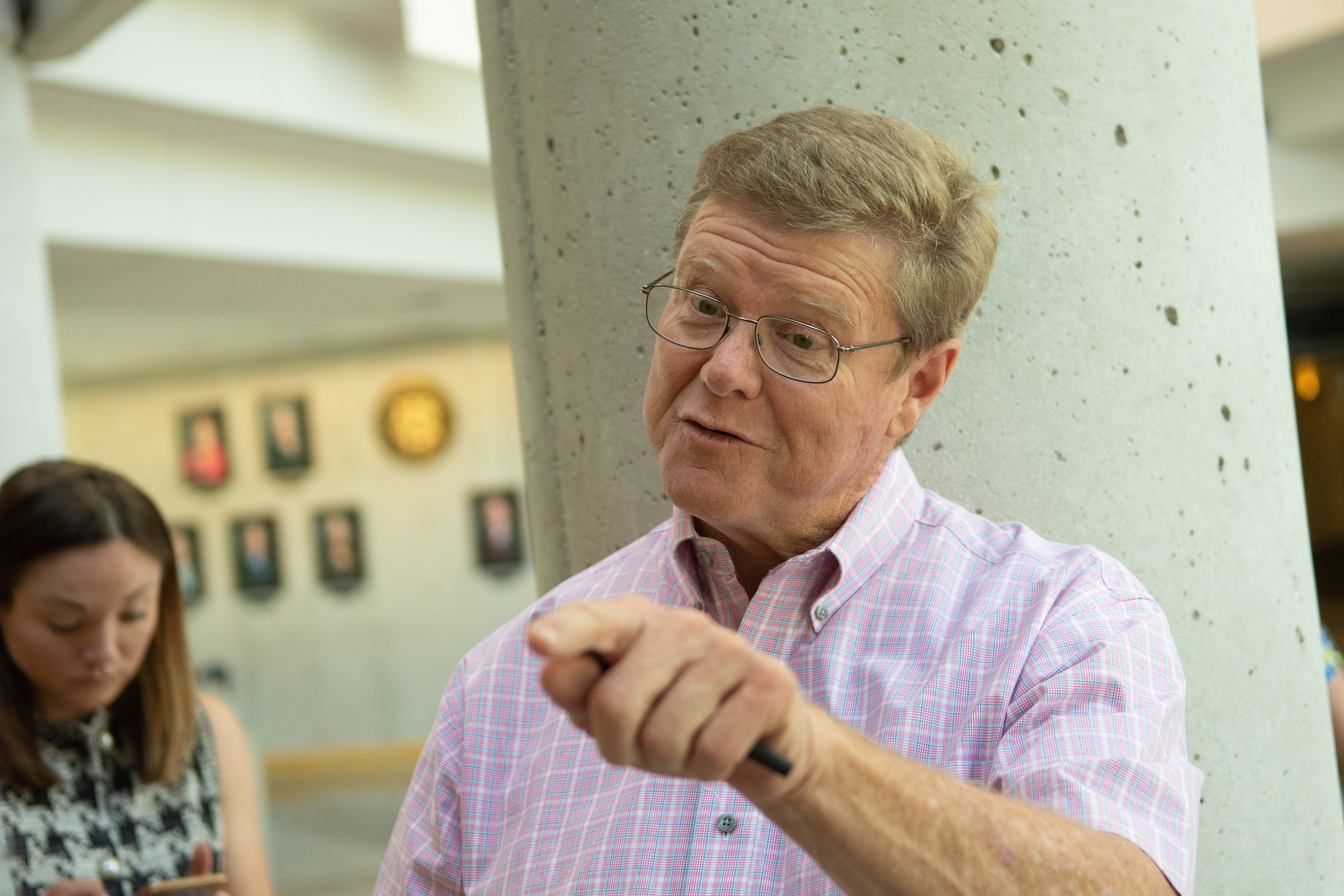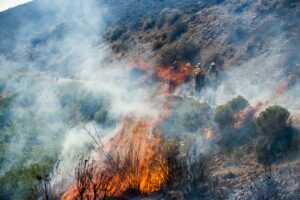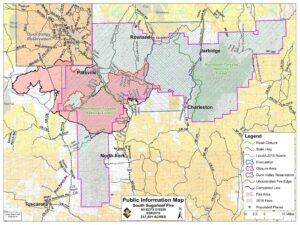Amodei pushes feds for more fire funding after FEMA denies the state's grant request

Rep. Mark Amodei said Tuesday he is frustrated with the Federal Emergency Management Agency (FEMA)’s decision not to grant funds to Nevada in the wake of a large-scale fire northeast of Elko.
In an interview during a Washoe County Commission meeting, the Northern Nevada congressman said he is pushing the agency to reconsider its decision and release funding. The state requested a Fire Management Assistance Grant from FEMA on Friday to help responders fight the Sugarloaf Fire, a blaze that has burned more than 237,000 acres, threatened ranching, burned wildlife habitat and prompted voluntary evacuations near Jarbidge.
FEMA denied the request on Aug. 25 after the regional director “determined that the Sugarloaf Fire did not threaten such destruction as would constitute a major disaster,” Brandi Richard, a spokesperson for the FEMA office in Oakland, said in a statement. FEMA weighs threats to communities and infrastructure, in addition to the total acreage of a fire.
In the case of the Sugarloaf Fire, about 75 to 100 homes were under a mandatory evacuation order and about 40 homes were under voluntary evacuation orders, FEMA said. But Amodei said he is frustrated that FEMA appeared to only be looking at potential damage to homes.
Amodei noted that the impacts of large-scale fires in the Great Basin can have devastating and lasting impacts on the range, affecting ranchers, agriculture, recreation and wildlife habitat.
“It’s a big deal in this neck of the woods,” Amodei said.
And the congressman wants FEMA to pay attention. He said he was displeased about the lack of funding from the agency for the current fire and the Martin Fire, the largest single blaze in the state’s history, which broke out in July. Together the fires have burned more than 600,000 acres.
“Quite frankly, the days of ‘we burned three-quarters of a million acres and you people don’t care about it’ are over,” said Amodei, who requested a briefing with FEMA next week.
“And by the way, I want the Oakland [FEMA staffer] to shag out to Winnemucca or Elko within the next 30 days,” he added. “We’re going to go out there and look around so [the agency staff has] at least seen the place that [they] have said, ‘oh, it doesn’t qualify.’”

More than 700 responders have been assigned to the Sugarloaf Fire, burning not far from land starting the multi-decade process of recovering from the Martin Fire. The Sugarloaf Fire in the Humboldt-Toiyabe National Forest, private land, state land and small parts of the Duck Valley Reservation. The fire, near the northeast border of the state, will likely have devastating impacts on ranching, displacing cattle and burning grazing habitat, which often takes years to recover.
The fire is also burning in a critical ecosystem for the Greater sage grouse, another setback to conservation efforts to boost dwindling populations of the bird and keep the imperiled species from being listed under the Endangered Species Act, which would bring development to a halt.
Caused by lightning, the 237,000 acre burn broke out in the afternoon of Aug. 17. High winds and dry vegetation, a problem throughout the West, aided the fire, which is 44 percent contained. Jessica Gardetto, a spokesperson for the National Interagency Fire Center, said that weather forecasts — it is expected to get warmer and drier — could push full containment out longer.
“When they get heavy winds out there, [the fires] are just unstoppable,” she said.
With increasingly arid conditions throughout much of the West, wildland fires have grown to be larger and more extreme. This year has been a difficult year for the state. After California, more acreage has burned in Nevada — about 1.02 million acres — than in any other state. Two fires alone, the Sugarloaf Fire and the human-caused Martin Fire, account for most of the damage.
The state did not apply for a FEMA grant to help fight the Martin Fire.
“Once you lose that habitat, [the question] becomes how are you going to restore it,” Amodei said, noting that the range often takes 50 years and sometimes even a century to recover.

He said it’s all the more reason FEMA should release funding for the Sugarloaf Fire. There are other fire funding streams too, he said, where he feels like Nevada does not get its fair share.
“We’re happy to be treated like everyone else in the West,” Amodei said. "But right now, being treated like everyone else in the West is nothing.”
When asked if the delegation was working with him on the funding issue, Amodei paused.
“No,” he said.
Sen. Dean Heller has requested the Senate Committee on Energy and Natural Resources to hold a hearing on wildfire. Last week, the senator announced that FEMA would send $1.5 million in separate funding to four Nevada counties to help them fight fires.
